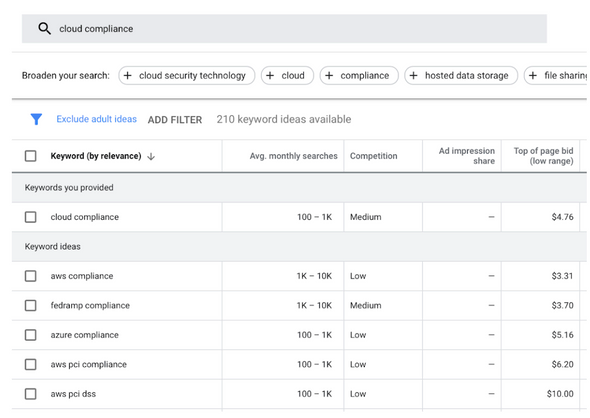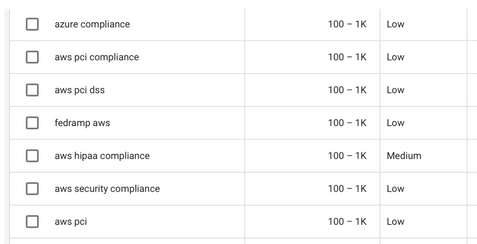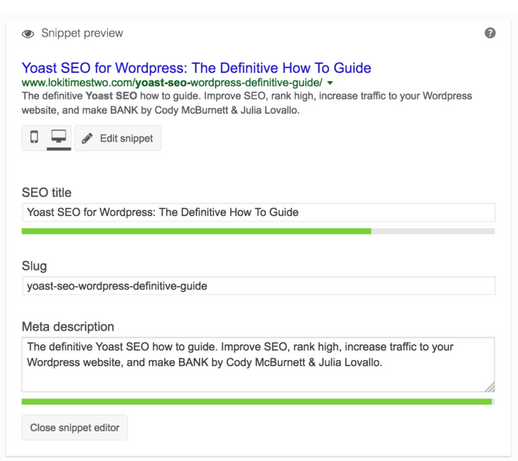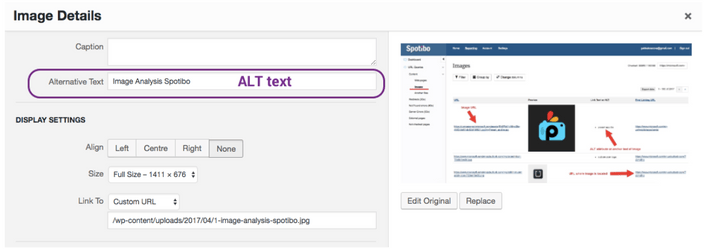The 3 Pillars for Effective Organic SEO
When you’re considering where to direct marketing resources, organic SEO has to be a business imperative. Not only is it one of the few marketing channels that you effectively don’t have to pay for, leads that come in through organic SEO are incredibly valuable. On average, organic search leads have a 14.6% close rate, compared to 1.7% for outbound marketing leads.
There are three aspects of organic SEO that you need to understand if you want your efforts to be successful. You don’t need to master them — you just need to apply them to every piece of content that you create:
- Maintain Consistent Content Production
- Create Relevant, Authoritative Content
- Fulfill Technical SEO Best Practices
We’ll cover all of these areas in this blog. For each, we’ll break them down, offer a few insider tools to make each one easier, and give you clear to-dos that you can start working on today.
1. Maintain Consistent Content Production
Setting a content schedule will benefit you and your organic SEO. Let’s talk about setting yourself up for success when it comes to scheduling content production and building an effective content calendar.
Establish a Habit
Anyone who has developed a workout schedule or similar commitment will understand: as long as you’re setting realistic goals for yourself, you can get into a habit that will last you for years. A consistent publishing schedule will not only get you into the habit of creating content, it showcases your consistency to users. If a new prospect can look back on your blog and see an unbroken chain of consistent content being produced, it reflects well on your business.
To borrow a phrase, the best time for you to have started creating content was yesterday. The second best time is today. From an SEO perspective, your content won’t rank if it doesn’t exist. Take the upfront time to build a realistic plan for content production and stick to it. If you're curious to understand the best methods for repurposing existing content (which we highly recommend!) - Repurposing Content for Maximum Buyer Influence.
Setting Yourself Up for Success with Google
It’s in Google’s interest to create a search tool that people want to use. If a user searches and finds what they’re looking for, they’ll come back. If they don’t, they’ll try a different search engine.
For years, marketers have thrown tactics at Google to try and game the system. Stuffing keywords into blogs, adding in a nonsensical amount of links, writing short articles, stealing blogs and pages word-for-word from popular websites, the list goes on. Stay away from these outdated “quick fixes” to SEO, they’re harmful to your brand’s reputation plus they become obsolete every time Google changes the algorithm.
Your job is to create unique pieces of content that people want to read. That is a timeless exercise. If you can maintain a consistent schedule of unique content, unified under specific themes, every further iteration of Google’s search algorithm will see you as a quality website with a rich history of relevant content.
Content Calendars
The easiest way to maintain consistent content production is to create a content calendar. To start with, it doesn’t have to be complex or far-reaching. Just have a physical document that you write out the topics and publishing dates for the next 4–5 pieces of content.
There are a few easy tools and templates for content calendars out there. Here’s an aggregated review of 15 from MarketMotive to get your search started.
Your To-Dos:
- Decide on a posting schedule that’s manageable for you. If that’s once a month, that’s fine. Once every two weeks is great as well. Maintain it for 4–5 pieces of content and see if you need to increase or decrease time between posts.
- Create a content calendar. Choose or create a template and then fill in those 4–5 content pieces (which in theory should be forecasting the next 30-60 days). Once you start creating content, you’ll discover if you’d benefit from more or less detail in your calendar.
Pro Tip: We recommend including the campaign theme, topic/primary message, target audience persona, and intended posting date as columns of your content calendar — at the very least.
2. Create Relevant, Authoritative Content
Consistency is the cornerstone of any organic SEO strategy. But, it’s not the only facet of it. For example, if you’re a database hosting company and you write a unique blog every week about payment processing, that’s not a successful SEO strategy.
The content you create needs to fit two categories:
- It makes sense for your brand.
You’re writing about things that your brand positions itself to have expertise in. While you may be interested in someday tethering your offerings to payment processing, that has nothing to do with the database hosting that your brand provides today — and it wouldn’t be what you’d be interested in ranking for organically or presenting your brand as the authority in to garner new prospects. - It’s what your prospects want to learn most about.
The vast majority of users who get to your website to read about innovations in payment processing will have no desire to then jump to your solutions page on cloud servers or request a quote for an enterprise MySQL configuration. You’re getting traffic, but it’s not the right traffic. These aren’t your prospects.
How Do I Determine What Makes Sense for My Brand?
Start by determining your core content Topic Clusters. Topic Clusters are the 3–5 categories that all your content should fit into. They represent your most important differentiators and your largest areas of expertise.
The database hosting company might decide that their Topic Clusters are cloud security, cloud certifications and compliance, and hybrid offline-online databases. These are the things their team has experience in and this is what they ultimately use as their set of core selling points. So, this gives them a framework to write every new piece of content in. If it doesn’t relate to one of these three Topic Clusters, it doesn’t make sense for their brand to produce content about.
How Do I Determine What My Prospects Want to Learn Most About?
You have a few methods to figure this out. One is to take your Topic Clusters and use Google AdWords’ Keyword Planner.
After logging in, click on ‘Discover new keywords,’ plug in a Topic Cluster, and click ‘Get Results.’ The list you generate represents real Google searches alongside their average monthly searches and potential competition. This competition column is specific to paid AdWords ads — however, it’s a useful tool to determine how much attention a keyword string is getting from your competitors.

Look at the Keyword ideas list. Your sweet spot will be keywords with a good number of average monthly searches and low-to-medium competition. This way, when you create content for organic SEO, you won’t be fighting too many ads or other sites using this same process for placement.
For example, our search for ‘cloud compliance’ returned a number of more specific certification and compliance categories that users are searching for that we can use as the focus of a new blog post.

Your To-Dos:
- Determine your Topic Clusters. Determine the 3–5 main areas of expertise that you want to use as the baseline for all future content.
- Use the Keyword Planner. Enter your Topic Clusters or related phrases to find useful keywords. Add in your products and services and see what comes up. You might find helpful terms that users are searching for as well as long-tail keywords (3-5 words in a phrase) that have high potential for bringing quality traffic.
Pro Tip: In this exercise, keep in mind the areas you ideally want to position your brand as the authority in. The subjects you choose as your Topic Clusters should be true to your brand but also a bit aspirational so you have room to grow in your position as a thought leader in the space.
3. Fulfill Technical SEO Best Practices
Technical SEO represents all the final touches that make your organic SEO content easily accessible to search engines and help them understand what they should be displaying in the search results.
Let’s say someone were to search “tips for maintaining your pool” — it’s clear which results Google prefers. Take a look at this example:
It’s the difference between this:

And this:

The first image was a Page 1 search result. It has a clear, complete title above a meta description written explicitly for search engines. The second image was a Page 8 search result. It has an incomplete title that uses url structure before saying what the page is about, above an incomplete meta description that Google most likely attempted to create based on page content.
Here are a few boxes that you can check for your website as a whole and for each page to ensure you’re following technical SEO best practices:
Site Speed
You may not realize it, but how fast your website loads plays a role in your search rankings. If Google doesn’t believe that users can access their search results fast enough, they’ll knock you down.
You can test your website load times through tools such as the HubSpot Website Grader. Simply put your URL into the tool and it will score you in a number of categories. For those that you need to work on, HubSpot will offer specific tips on what you should do next.
Internal Linking
Linking between pages on your website increases your search rankings and visibility. To start, it makes it easier for Google to crawl your website to discover all your pages. More importantly, the number of links directing to any one page indicates to Google that that page is important.
This doesn’t mean that you want to be stuffing links into all your pages — Google will ding you if it sees that, or if it sees links that don’t make sense. However, it lends more importance to the Topic Clusters you created earlier. The more content you create in those clusters, the more times you can link to key product pages or important articles you’ve written, increasing their organic SEO potential.
Meta Titles and Meta Descriptions
Looking back on those images of the search results on Page 1 and Page 8, you can see the difference in how they appeared in Google. Controlling that appearance is a key function of technical SEO.
Without any action on your part, the Meta Title of the search result will in most cases be pulled directly from the title of your page or blog post. The Meta Description (the block of text below the Title) will be pulled from the introduction paragraph or a “best guess” by Google.
Pro Tip: Keep in mind your Meta Titles should be 50 to 60 characters in length and your Meta Descriptions should be 150 to 160 characters in length. And, be sure to include at least one keyword related to the content in each.
To control what appears, you have two options:
1. Edit the source code. If you have coding expertise, you can open the page’s code in a text editor or coding editor. You’ll find the Meta Title in between opening and closing title tags:
Then, you’ll find the Meta Description in a tag labeled ‘meta name="description"’:
2. Use a plugin. In user-friendly content management systems such as Wordpress, you can easily edit Meta Titles and Meta Descriptions for every page and post by installing a plugin such as Yoast SEO.

Image Alt Text
A final aspect of technical SEO that many marketers ignore is tagging every image they upload with alt text that describes what that image contains. Google and other search engines use alt text to help them understand the context of what an image is and how it relates to the text surrounding it. If you can use a keyword in your alt text, this makes it even more powerful.
Similar to Meta Tags and Meta Descriptions, you have two ways to edit image alt text:
1. Edit the source code. In the HTML code for every image, you’ll be able to add alt text to the img tag:
2. Use your content management system. Whichever CMS you’re in, you’ll find an included tool in the user interface to add alt text to an image you upload. Here’s an example of what that looks like in WordPress:

Your To-Dos:
- Review the technical SEO compliance of current posts. Check your site speed, internal linking, meta titles and descriptions, and image alt text. Make adjustments or improvements to these retroactively.
- Create a checklist for your team going forward. Provide a roadmap for your content creators so all technical SEO items are optimized based on your Topic Clusters, high-impact keywords, and primary SEO goals before content goes live in the future.
Pro Tip: Make sure not to alter the URL at all in making updates to these aspects for technical SEO. You will lose any potential SEO juice you’ve built historically and existing inbound links will result in a 404 Error if you alter the URL itself for any particular post or webpage.
Final Thoughts
Organic SEO is a vital tool to incorporate into any team’s overall marketing mix. With a thoughtful strategy and precise execution, a realized ROI is possible to measure. Following these three processes of maintaining consistent content production, creating relevant and authoritative content, and keeping on top of technical SEO best practices will give your brand a strong foothold in search rankings and increase your organic traffic.
We’ve helped our clients kickstart their SEO strategy and worked with others to refine what’s currently in place. If you want to talk about how these organic SEO tactics should apply to your business, request a consultation and we can connect!




